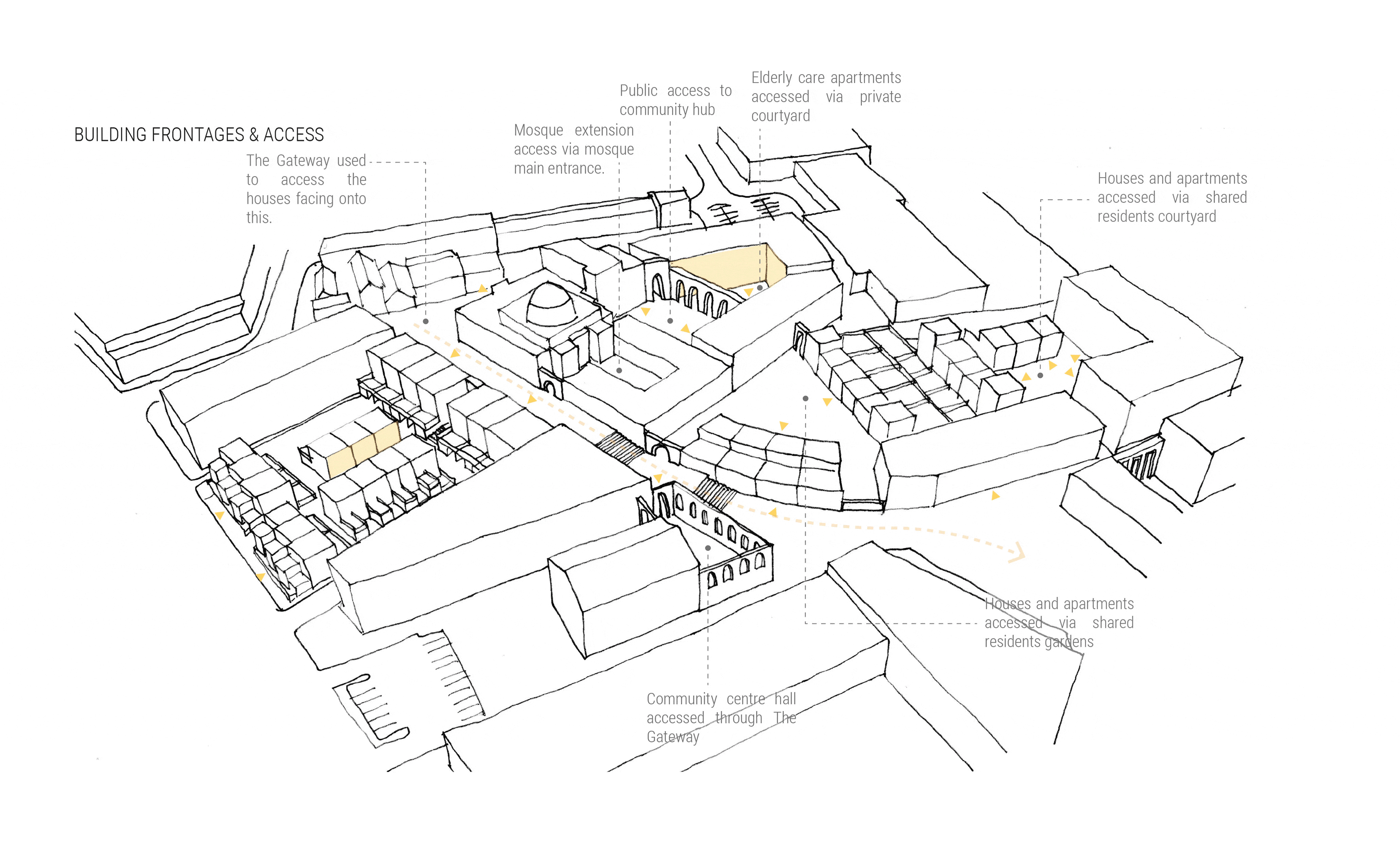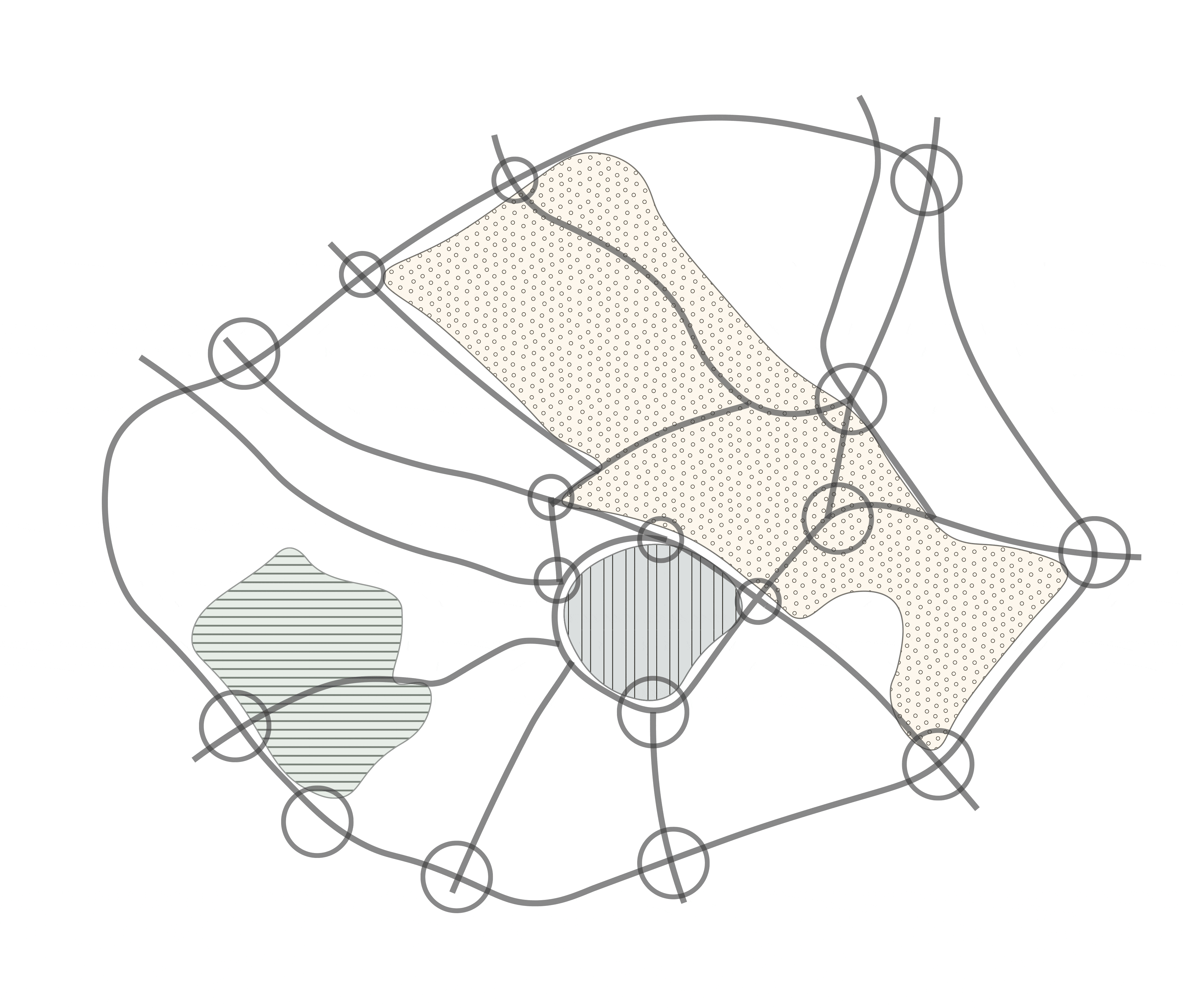Life in the New Quarter...
“There is an art of relationship just as there is an art of architecture. Its purpose is to take all the elements that go to create the environment: and weave them together in such a way that drama is released” - G.Cullen, 1961
Posted 24 Feb 2021 16:08
A New Quarter...
A small area of the wider masterplan surrounding the monumental has been developed through an iterative process. This will be Bradford's new intergenerational quarter that will knit the existing residential area and top of town area creating a new neighbourhood derived from the monumental form and surrounding context.
Posted 24 Feb 2021 16:05
The Gateway Route...
The Gateway is an important route that symbolically elevates the monumental form which will be used to weave together the existing residential area with the Top of town area.
Posted 24 Feb 2021 15:03
Setting the Base...
Several massing options were explored to set the foundations of the masterplan strategies to take forward. This option considers key urban principles including;
- The pedestrianised Gateway route connecting the 'top of town' area with the residential neighbourhood.
- A diverted traffic-way system following the partial removal of the ring road.
- Blocks derived from the monumental form, creating a hierarchy of public and private spaces.
Posted 24 Feb 2021 14:30
The Image of the City...
“Yet there are fundamental functions of which the city forms may be
expressive: circulation, major land-uses, key focal points... Above all, if the environment is visibly organized and sharply identified, then the citizen can inform it with his own meanings and connections. Then it will become a true place, remarkable and unmistakable.” - K.Lynch, 1964.
Using Lynch’s theory the City a selection of Istanbul's mosques have been explored including the architectural features, the complexes and private/public spaces. The analysis of Istanbul and the chosen mosques have allowed me to understand the surroundings, in particular how the religious form is embedded within the context and how the relationship between both the urban surroundings and the monumental form have a corresponding relation. Following on from this I was able to develop the urban design principles, that set the foundations of the masterplan proposal.
Posted 23 Feb 2021 21:10
Approach to S2 : Unifying neighbourhoods
Following on from my S1 submission the understanding of disconnected neighbourhoods (residential area of Manningham and the 'Top of Town') through the barrier of the main ring road was identified. This saw opportunities to connect the two districts using monumental buildings and the surrounding disused public spaces.
Posted 18 Jan 2021 12:32
The Gateway...
The gateway and monumental features that breaks the barriers between the residential area and the city centre that aims to bring communities, people and spaces.
Posted 27 Nov 2020 23:56
Monument, Place and Gateway...
The orientation and direction of the Bradford Central Mosque as key monumental building plays a significant role which forms a direct route in to the ‘top of town’ area. With current proposals of demolishing Oastler Market, this opens opportunities to connect the residential neighbourhood to the city centre via the mosque by taking into consideration the site topography and rich architectural features of the surrounding monumental buildings. Within the courtyard, the arcades house independent stalls offering diverse and cultural goods that allow the community of Bradford to come together.
Posted 27 Nov 2020 23:48

The Symbolic Wall of Bradford...
The ring road as a boundary or a barrier become apparent after the analysis starting from Wardley’s city proposals with the elaborate system of the ring roads.
Although Bradford had no ancient walls in the past, the formation of the ring road begins to resemble the same wall fortifications that have been used in historical times to protect the inner city from the suburban and outer areas.
In Bradford’s case, the ring road allows vehicular movement from the outside of the city centre to the inside, which again due to its current purpose you begin to see the separation between the central area and suburban outskirts by this symbolic wall. This is not just a physical barrier but it also prevents the idea of communities neighbourhoods and people coming together in one place.
Rossi quoted, "in the process of transformation, the city walls stand as the most important artefact of the city on which to intervene; even as an element of architectural composition..."
Drewton Road, a particular junction in to the high street is taken as a key 'place' to break the restrictive barrier.
Posted 27 Nov 2020 23:22
Reminiscent of the Modernist Masterplan...
Wardley’s post-war masterplan of Bradford divided the central city area into ‘functional’ zones where the city centre became the new shopping, commercial and entertainment hub and new council and industrial estates redesignated to the urban fringe. Wardley also implemented the idea of three concentric rings, the inner ring placing dual carriageways at the heart of Bradford and motor vehicles were encouraged to use in order to travel between various zones.
Although, Wardley's 20 year masterplan was never fully implemented, from the site analysis of contemporary Bradford, similar patterns of zoning and ring road systems can be identified.
The overlays highlight the barriers within the city that begin to create a division between the outskirts of Bradford and central high street area.
Posted 27 Nov 2020 23:03









